When I first stumbled upon the Ryobi Hot Glue Gun, I knew it was a tool I was going to get, for two good reasons.
First, I already have a couple of these Ryobi 18V One+ Lithium-ion batteries at home that works with my other Ryobi power tools. Getting another One+ compatible tool means my batteries will be applicable to an extra tool at home, making these expensive batteries better value for money.
Second, and probably the more important reason, is that prior to this, I had been using corded hot glue guns at jobsites (see below), and the hassle with these are:
- You’d need to find a socket outlet
- The work area is often far from the socket outlet point, and an extension cord becomes necessary.
- The cables on corded hot glue guns are usually thick and stiff, which makes the hot glue gun unwieldy, and the cable often gets in the way of work.
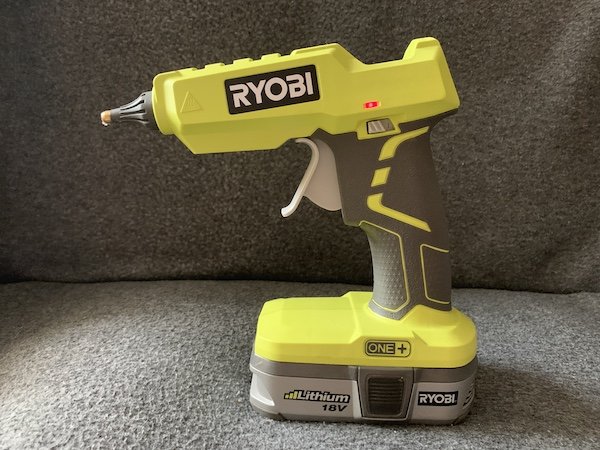
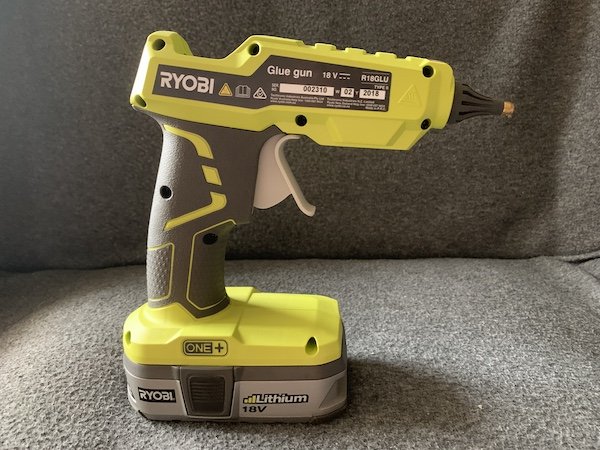
Hence, when I first discovered Ryobi P305 18V One+ Hot Glue Gun at Bunnings Australia, I knew it was a tool I would find to be especially useful. So I bought one – the bare tool version without the battery and charger.
What’s Included in the Package
The contents of the box are quite simple. All you’ll find inside is the hot glue gun itself, with the instruction manual and warranty information…and 6 hot glue sticks.
In fact, that’s all you’ll need to start using the Ryobi Hot Glue Gun. After you plug in a charged battery which you already own, of course.
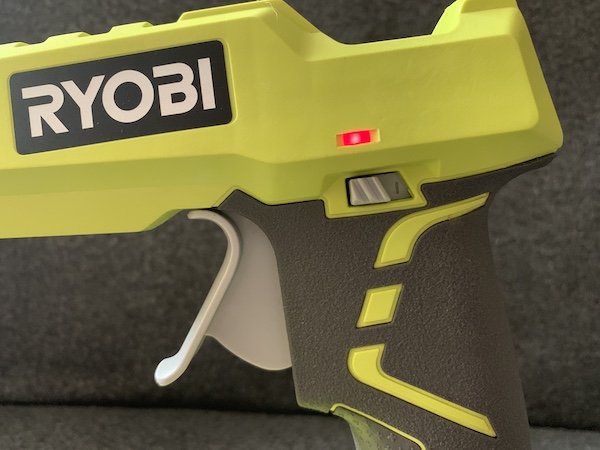
Using the Ryobi P305 18V One+ Hot Glue Gun
With the weight of the battery below the handle, the centre of gravity of the tool is low. You will find that the Ryobi Hot Glue Gun feels very balanced in the hand, as it is nether top- nor front-heavy. In other words, unlike the feeling you get holding say a power drill or impact driver.
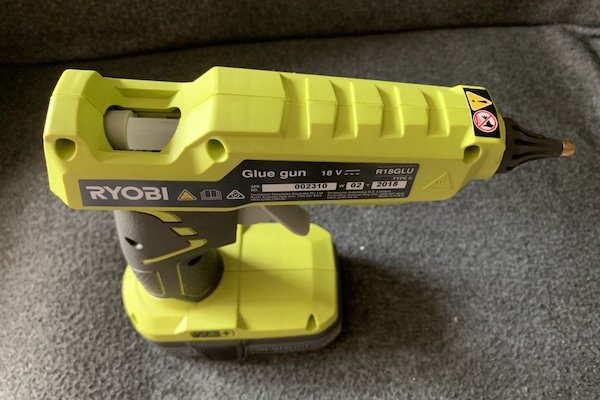
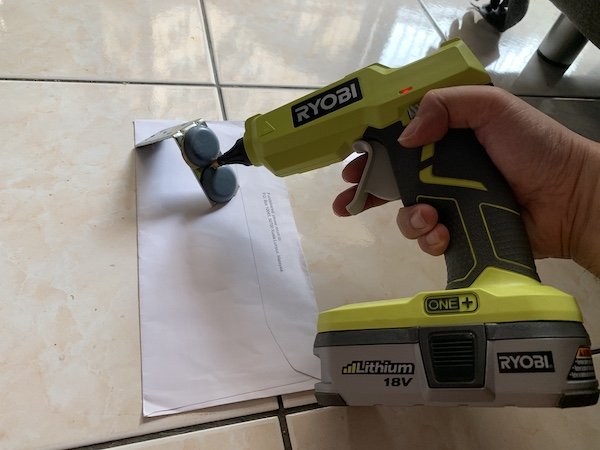
Ergonomics
As the battery has some heft with a flat bottom, you will be able to place the Ryobi Hot Glue Gun standing on the floor or your level work surface.
This is convenient as you do not need to worry about the hot tip of the tool being near or in contact with and damaging your work surface.
With the usual conventional corded hot glue guns, you will need to use a stand, or make sure the thick cable doesn’t force the hot tip down against the carpeted floor or wooden table – one of the problems I often encounter with the corded ones.
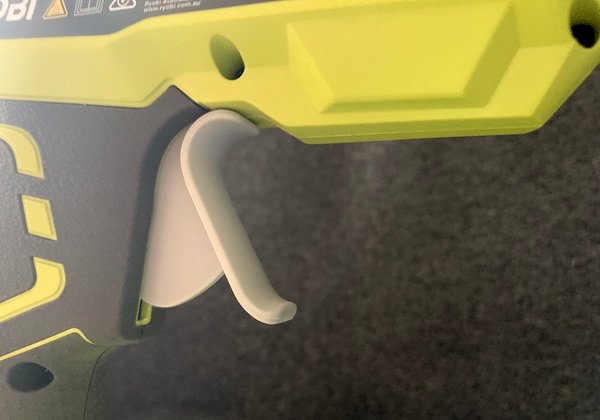
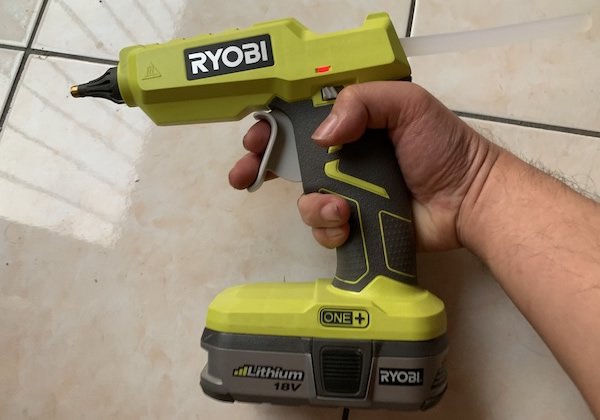
Temperature and Viscosity
One other important difference I noted was the temperature is not at hot as a corded hot glue gun, at least not the ones I currently own. I’m not sure if this is due to a lower current provided by the battery or it had been intentionally designed that way, but the lower temperature point at the discharge tip means that the hot glue sticks are not melted to a low viscosity. This makes the molten glue less fluid and easier to work with.
The glue on corded hot glue guns I’ve used in the past tend to be too fluid and drippy. While higher fluidity may be good for narrow openings and tight crevices, it is a little harder to work with and tend to be a bit messy.
However, I seldom come across a situation where I need to work the glue into small gaps, so the better workability of the less fluid hot glue with the Ryobi Hot Glue Gun is preferred.
Conclusion
I like the Ryobi P305 18V One+ Hot Glue Gun so much that it is my default hot glue gun in my tool kit now.
I still bring along a small corded hot glue gun as it doesn’t take up much weight and space, which would serve as a good back up for whatever reasons, or as second tool for another worker.
If you a keen DIY enthusiast or regularly making handicrafts, you will find this Ryobi hot glue gun to be exceptionally handy and useful.
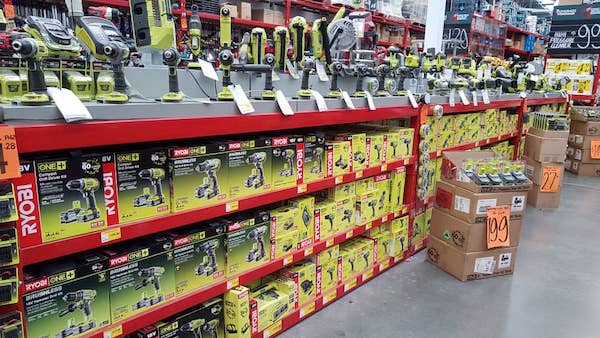

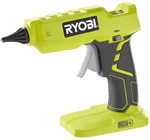
Did you ever post the glue gun temps? Thanks.
Sorry Rodney, I never got round to posting the figures and I no longer have the records. 🙂